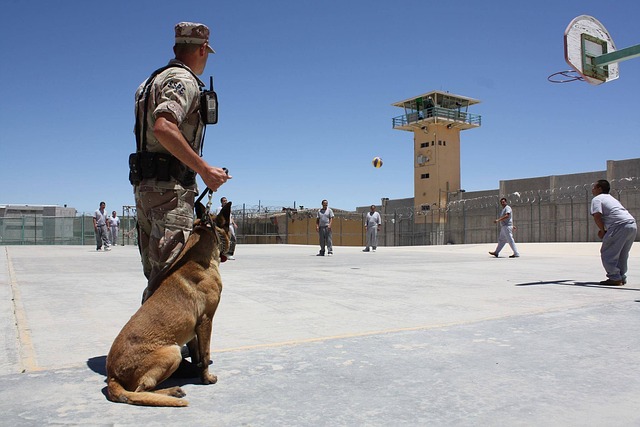Rural and urban communities face unique DUI enforcement challenges due to population density differences. Rural areas opt for increased patrols and stricter limits, while urban centers leverage advanced technologies like breathalyzer devices, remote monitoring, and data analytics. Urban courts offer flexible sentencing tailored to socioeconomic factors. Emerging technologies in DUI law, such as ADAS, vehicle tracking, and real-time data analytics, revolutionize enforcement in urban settings, enhancing efficiency and resource allocation. Similarly, advanced radar systems, apps, and predictive analysis tools improve rural DUI enforcement, targeting high-risk areas. These innovations aim to bridge the gap between rural and urban DUI law enforcement, ensuring fairer and safer driving conditions nationwide through emerging technologies.
In the vast landscape of DUI legislation, rural and urban areas face distinct challenges. This article explores the nuances of DUI laws between these contrasting settings, focusing on the impact of emerging technologies. While urban centers leverage advanced tools for enforcement, rural jurisdictions grapple with unique barriers. We delve into safety measures, data insights, and future legislation aiming to bridge the gap, highlighting the dynamic role of technology in shaping DUI regulations, particularly through emerging innovations in DUI law.
- Understanding DUI Laws: A Basic Comparison Between Rural and Urban Areas
- Impact of Emerging Technologies on DUI Enforcement in Urban Centers
- Rural DUI Enforcement: Challenges and the Role of New Technologies
- Safety Measures and Data Insights: How Technology is Shaping Urban DUI Laws
- The Future of DUI Legislation: Bridging the Gap Between Rural and Urban Jurisdictions
Understanding DUI Laws: A Basic Comparison Between Rural and Urban Areas

In both rural and urban areas, Driving Under the Influence (DUI) laws aim to protect public safety by preventing individuals from operating vehicles while impaired. However, there are notable differences in how these laws are implemented and enforced between the two settings due to varying community dynamics and resource availability. In rural communities, with their lower population densities, law enforcement often relies on proactive measures like increased patrol frequency and community watch programs to deter DUI incidents. These areas might also have stricter blood alcohol limits or more severe penalties as a deterrent, given the potential for longer response times from emergency services.
In contrast, urban centers benefit from more extensive resources, including specialized DUI task forces and advanced technology. Emerging technologies in DUI law, such as breathalyzer devices at traffic stops or remote alcohol monitoring programs, are often more readily available in urban areas. These innovations not only aid in accurate testing but also enable continuous monitoring of offenders, enhancing enforcement efforts. Additionally, urban courts may offer alternative sentencing options, like community service or education programs, to address DUI offenses while considering the unique challenges and socioeconomic factors present in densely populated regions.
Impact of Emerging Technologies on DUI Enforcement in Urban Centers

The rapid advancement of emerging technologies has significantly reshaped DUI (Driving Under the Influence) enforcement strategies in urban areas. Modern tools like advanced driver-assistance systems (ADAS), vehicle tracking devices, and real-time data analytics play a pivotal role in identifying and deterring impaired drivers. For instance, ADAS features such as automatic emergency braking and lane departure warnings can alert officers to potential DUI incidents before they occur, enabling proactive policing.
Additionally, the integration of artificial intelligence (AI) algorithms into police databases allows for predictive modeling, helping authorities identify high-risk areas and times when DUI offenses are more likely to occur. This data-driven approach enhances urban DUI enforcement efficiency, ensuring resources are allocated where they can make the most significant impact. Emerging technologies not only strengthen public safety but also contribute to a more strategic and responsive law enforcement system in densely populated regions.
Rural DUI Enforcement: Challenges and the Role of New Technologies

In rural areas, DUI enforcement faces unique challenges. Lower population densities make it harder for law enforcement to patrol roads consistently, allowing potential drunk drivers more time to cause harm. Additionally, limited resources and smaller police forces mean fewer officers available to handle these issues. This gap in enforcement can lead to increased risks on rural roads.
Emerging technologies in DUI law are playing a pivotal role in addressing these challenges. From advanced radar systems that can detect speeders and drunk drivers over long distances to innovative apps and devices that assist in identifying potential impairment, these new tools are enhancing rural DUI enforcement. Moreover, data-driven approaches and the use of technology for predictive analysis help authorities pinpoint high-risk areas and times, enabling them to deploy resources more effectively.
Safety Measures and Data Insights: How Technology is Shaping Urban DUI Laws

In the urban landscape, technology is playing a pivotal role in shaping and enhancing DUI (Driving Under the Influence) laws, with an emphasis on safety measures. Emerging technologies like advanced driver-assistance systems (ADAS) and real-time data analytics are being leveraged to combat drunk driving. These innovations offer more accurate and immediate insights into traffic patterns, enabling law enforcement agencies to strategically allocate resources during peak hours or special events when DUI incidents tend to surge.
For instance, smart city infrastructure equipped with cameras, sensors, and GPS tracking can detect and monitor suspicious behaviors on the road, providing crucial data for proactive enforcement. Additionally, remote breath-testing devices and mobile app-based reporting systems are streamlining the administrative process, making it more efficient while ensuring accurate documentation. This technological integration not only reinforces urban DUI laws but also contributes to a safer driving environment overall.
The Future of DUI Legislation: Bridging the Gap Between Rural and Urban Jurisdictions

As we navigate the evolving landscape of DUI legislation, it’s crucial to recognize that emerging technologies are playing a significant role in shaping the future of alcohol-impaired driving laws. From advanced breathalyzer devices to innovative blood testing methods, these technological advancements promise greater accuracy and consistency in enforcement across all jurisdictions—both rural and urban. The goal is to bridge the gap between varying legal frameworks, ensuring fairness and equal protection for all drivers.
In particular, the integration of cutting-edge technology can help address unique challenges faced by rural areas, such as limited access to law enforcement resources. For instance, telemedicine and remote breath testing could provide efficient solutions, making it easier for rural communities to implement stringent DUI laws while adapting to modern technological trends. This approach not only strengthens public safety but also fosters a more uniform application of DUI regulations nationwide.
In conclusion, while traditional methods have long governed DUI laws, emerging technologies are now playing a pivotal role in both urban and rural areas. In urban centers, these innovations enhance enforcement capabilities, while in rural settings, they present unique challenges but also offer solutions to improve safety. As we move forward, bridging the gap between rural and urban jurisdictions through legislative adaptation is crucial to ensure consistent and effective DUI legislation. By integrating technology and adopting best practices, we can create a safer driving environment for all.






